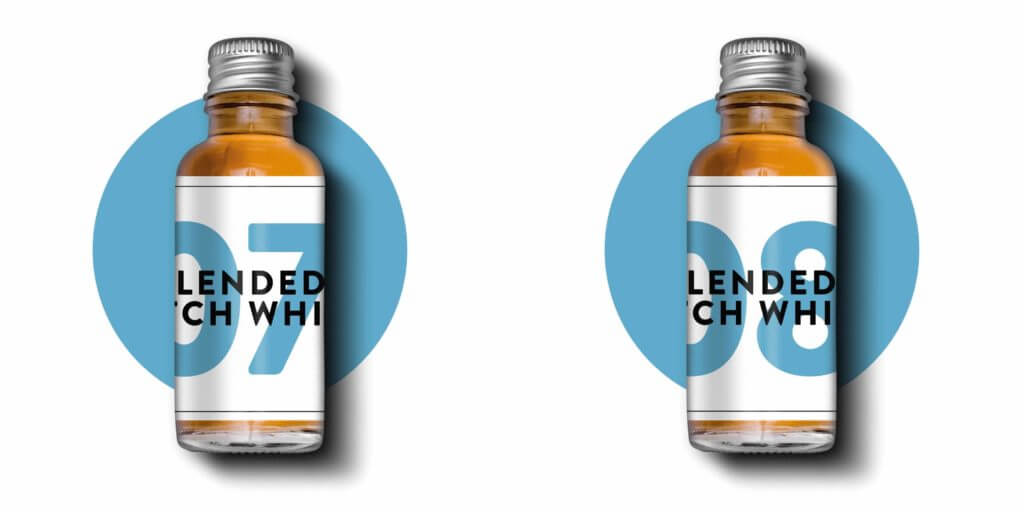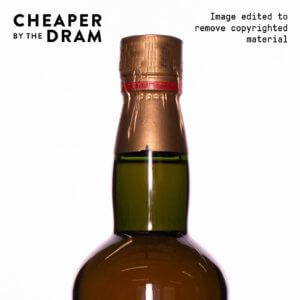
LET’S GO WHITE BACK TO THE 1950S: WHITE HORSE 1958 AND BLACK & WHITE 1950S
This week we are offering you something completely different, something that we are almost certain you would not be able to try anywhere else: A 1958 White Horse Bottling, from the era when the infamous Malt Mill was in production, and a 1950s Black and White. These are two iconic blended whiskies, from a period when blending was king, and from two of the biggest names in whisky at the time (and arguably today too).
White Horse Blended Whisky
White Horse Distillers was originally founded in 1881 under the name Mackie & Co, they changed their name officially in the 1920s after the founder Peter Mackie died. Mackie and Co were one of the ‘Big Five’ a group of Scotch Whisky producers who dominated the whisky industry in the early 20th century.
The popularity of White Horse boomed in the early 20th century thanks to the company’s ethos; to produce a consistent, high quality whisky blended to compliment the distinctive Lagavulin malt at its heart. White Horse innovated continuously in order to expand and become one of the most popular blends of the period, for example when the ‘White Horse Screwcap’ was introduced in 1926 demand for White Horse whisky doubled in six months.
The Infamous Malt Mill
The 1958 bottling of White Horse is from the era when the infamous Malt Mill was in operation at Lagavulin. Malt Mill was built at Lagavulin in 1908 as a direct copy of the stills at Laphroaig after the new owner of Laphroaig decided to stop supplying their whisky for White Horse blends. Despite being an exact replica of the stills, and even having poached Laphroaig’s head distiller, the whisky produced at Malt Mill was neither Laphroaig nor Lagavulin, but it was its own unique malt. Malt Mill was closed in 1962 and as there are no recorded single malt bottlings of the whisky, bottles like the 1952 White Horse are the only place you can try whisky from this iconic distillery.
Black & White Blended Whisky
Black and White was created by James Buchanan & Co., another of the ‘Big Five’ Scotch Whisky producers of the time and was specifically blended to be smooth and light. When Black and White was first released in the late 19th century it was known as Buchanan’s House of Commons – in honour of the prestigious Member’s Bar at the House of Commons where it was served. It proved a massive success both as a whisky and a packaging (thanks to fans asking for ‘that Black and White whisky,’) and in 1902 its name was officially changed to match its catchy moniker Black and White.
Despite having been temporarily taken of the market in the UK in the 1970s the brand achieved global popularity due to the whisky’s consistency and classic light style. The distinctive black and white terriers associated with the brand were used in marketing from the 1920s onward. They didn’t appear on bottles until the 1960s when they were used for some bottlings then in 2013 they became a standard part of the modern label.
- Cheaper By The Dram NO.07
- CBTD NO.07 & NO.08: Blended White Horse 1958 and blended Black & White from the 1950s
What are these two bottles worth?
The bottles in this release have a combined total of £1,500. You may be surprised to know that the bottle White Horse 1958 used in release NO.08 is one of the most expensive bottles we are releasing before Christmas, largely because bottles rarely come up for sale. Last time we saw one for sale it was for a hefty £1,200, that means a bottle of White Horse 1958 will set you back the same amount as the Hart Brother’s bottle of 1971 Macallan 23 Year Old we released as CBTD NO.04.
The 1950s bottling of Black and White in CBTD NO.07 on the other hand would set you back just £300-£400. Why the difference?
As with most bottles of whisky, this is about demand and desirability. Blended whisky in general is less collectable than single malt, largely we can say that is because blended whisky isn’t limited edition, whereas the collectable single malts usually are. White Horse bottles like the one in NO.08 are the exception because of the sought-after single malts and big names used in the blend.
Why are we offering these two bottles? The bottles are part of the history of Scotch Whisky. They provide the opportunity to step back 70 years and try a taste of whisky from the 1950s, to try something from ghost distillery and to try a past incarnation of a whisky that is still available today.
Buy CBTD Ref NO.07 here from the 27th November
Buy CBTD Ref NO.08 here from the 27th November
Don’t forget to sign up to our mailing list to buy these drams the day before they go on general sale.




